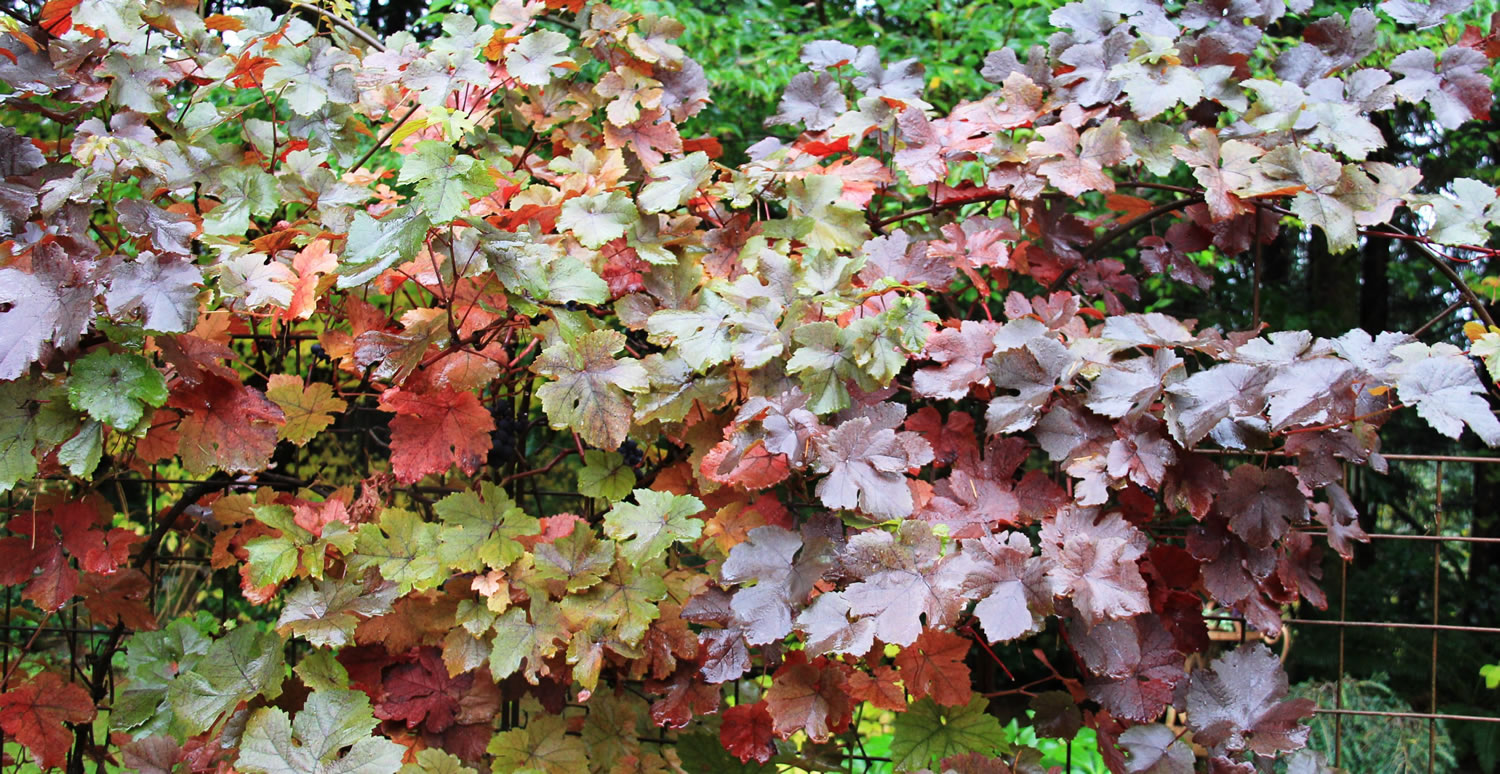Unless you have gardened in the Pacific Northwest for some time, you might not realize that certain roses bloom long after most retail stores have closed down their garden department for the winter season. Nurseries might still have hardy varieties available. Even if an early spell of cold weather took a nip out of Halloween ghouls and goblins, my Rosa ‘Double Delight’ offers a last flush of cream and red blossoms for the Thanksgiving table.
Check all garden plants periodically for water. At this time of year, I am referring to the problem of too much water, especially in potted plants. Most plants want to be moist but well drained, so they are not standing in water. This applies to perennials, needle-leaved evergreens, broad-leaved evergreens and trees and shrubs that were planted out in the garden this fall.
A last, light addition of organic mulch will help hold moisture in the ground for the benefit of new plants. If you are not sure of a plant’s hardiness, protect the soil around the plant from freezing by covering the crown of the plant with a thick layer of straw or peat. Leave the old stems on the plant for extra protection. They will most likely die back, but not necessarily all the way into the crown. Remove the protection in
spring, after the first new shoots appear.
o o o
Protect your plants from frost. Depending on your elevation and your position in relationship to hills and valleys, your zonal region’s first frost is certainly on the horizon. For some, it arrived earlier in the month of November. Stay tuned to television and news reports to find out exactly when frost will descend in your area or check with your local nursery for the average first frost date.
o o o
If you haven’t already done so, take the final step in committing your garden to winter preparation. Remove any of the last dead or dying annuals, as well as spent perennial plant material. Most tender bedding plants are well past flowering. It is likely that what is left standing is quite bedraggled by this time. The fact is they will never look any better than they do right now. Add them to the compost heap. Remember this never-changing mantra; never add diseased or insect-infested foliage to compost.
If you planted out cool season pansies and kale, heavy rain may have taken its toll on them. Clean them up by removing spent flower heads and withered, weather-beaten foliage. Cut pansies back to within a couple of inches of the ground. It’s possible they will produce another flush of bloom before deep winter sets in. If you have dahlias planted out in the garden, the best time to cut them back to the ground is after a killing frost. The stalks and foliage will turn dark brown, almost black, and should be cut back close to the tuber.
Last winter, after freezing snow and chilling wind and rain, I received many letters and e-mails about winter preparation. In areas that receive winter snow and ice storms, late fall is the last chance to wrap shrubby branches with twine to prevent them from breaking under the weight of heavy rain or snow. Start by securing twine to the trunk of the shrub near the base and wrap upward in a spiral. Once you reach the top, tie the twine to the trunk again and spiral your way back down.
All hedges should be clipped back so that the sides taper in as you get closer to the top of the hedge. In other words, the widest part of a hedge should be at the base and the top should be trimmed narrower than the bottom. Trimmed in this manner, snow will not split the top of the hedge open. In theory, snow or extreme rain will fall equally along the sides of the hedge. If you have a hedge of yew or any other needled evergreen, tie in or remove branches that look like they might catch and hold quantities of snow.
This is your last chance to protect any half-hardy or tender plants you intend to leave out in the garden. Mulch these plants with compost, bark or straw to create a blanket of protection over the root system. Most roses will benefit from an application of straw and mulch, mounded about 5 or 6 inches deep at the base of the rose canes. Unless they are well protected, plants in one gallon pots or smaller are more likely to survive winter if planted in the ground.
Robb Rosser is a WSU-certified master gardener. Reach him at Write2Robb@aol.com.



